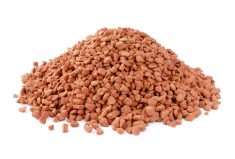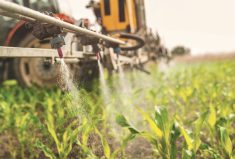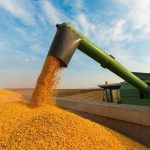Glacier FarmMedia – Fertilizer prices have mostly hit a plateau and will likely start to creep up again, says one analyst.
“Farmers would be incentivized to get the product that they need for the coming 12 months probably sooner rather than later if they want to make use of the bottom of the market,” said Chris Lawson, head of fertilizers at market consulting firm CRU Group.
The fertilizer sector has seen a turbulent couple of years. When Russia invaded Ukraine in 2022, sanctions on Russia and Belarus were expected to curtail fertilizer supply from those countries.
Read Also

Alberta agriculture minister faces recall petition
The number of approved recall petitions has risen to nine for Premier Danielle Smith’s United Conservative Party caucus after Monday’s confirmation to Alberta’s chief electoral officer.
It was another element added to a string of detrimental weather events in the previous two years.
Josh Linville, vice-president of fertilizer for StoneX Group, discussed the market at a January Manitoba Ag Days presentation when fertilizer prices were still sky high.
He pointed to the corn price spike following a 2020 windstorm that flattened crops in the U.S. Midwest, leading to a surge in fertilizer demand. As well, a Texas cold snap jacked up natural gas prices in 2021 and a Gulf Coast hurricane later that year temporarily wiped out the power grid in fertilizer manufacturing areas.
After the Russian invasion of Ukraine, prices shot through the ceiling.
Another presentation, this one by Manitoba Agriculture staff, suggested farmers who bought urea nitrogen in fall 2022 for the following spring faced a price tag of about $1,100 per tonne, more than twice what they would have paid a year before. Those numbers were based on a survey of local fertilizer prices.
Following the invasion, Canadian firm Nutrien saw an opportunity to supply an expected gap in the potash market while capitalizing on high prices, said Lawson.
However, Belarus was able to get more potash to market than initially expected, he said. In 2021, it exported 12.3 million tonnes. In 2022, it exported five million. This year, exports of eight million tonnes are expected.
Many other countries also continued to buy Russian fertilizer, Linville said in January.
Demand plummets, price slides
High prices led to reduced demand around the world, Lawson noted. He cited potash demand, which fell to 59 million tonnes in 2022 from 71 million tonnes in 2021.
North America cut demand by about three million tonnes, likely due in part to distributors drawing down stocks.
That waning demand led to a sustained drop in prices, which had consequences for Nutrien. The company announced a pause to plans for increased potash production and halted its clean ammonia project in Louisiana, Reuters reported Aug. 2.
A few days earlier, Nutrien announced it would cut production at its Cory potash mine in Saskatchewan due to a strike of dock workers at Western Canadian ports.
Also on Aug. 2, Florida-based fertilizer company Mosaic restarted its Colonsay, Sask., mine after idling it due to waning demand, Reuters reported. The company said the move would offset a short-term drop in production due to summer maintenance at its Esterhazy, Sask., facility.
Mosaic CEO Joc O’Rourke told analysts that the firm anticipates global potash constraints, particularly from Belarus and at North American ports, the same article noted.
“We’re already seeing robust demand in several of our key markets since the spring,” O’Rourke was quoted as saying, in reference to North America and Brazil.
Both Mosaic and Nutrien reported lower than expected profits over the last quarter.
Current market
At present, prices for nitrogen, phosphate and potash have roughly leveled out. Though nitrogen prices have risen about $100 per tonne and phosphate has also climbed slightly, Lawson said they will likely come down again, though not to the bottom hit earlier this year.
“We do expect prices to increase slowly but surely over the next 12 months,” he said.
Demand has rebounded. Potash demand is expected to be 64 million tonnes in 2023, Lawson said, and is likely to climb in 2024 due to a possible need to restock.
On the retail front, farmers and distributors are struggling with volatility.
Pricing fertilizer was generally done between harvest and seeding, but “now I think fertilizer pricing is almost a 12-month-a-year practice,” said Darren Bond, a farm management specialist with the province. “There’s been a lot of movement on everything.”
Ray Redfern, founder and president of Manitoba’s Redfern Farm Services, said he is reluctant to make recommendations on when to buy.
“We’re more in the dark than you,” he said.
Bond said he’s heard that some farmers are buying only portions of what they need as a way to mitigate risk.
With current fertilizer and crop prices, there’s profitability to be had, he added. However, yield is the big question. Many areas of Manitoba are quite dry, while others have been battered by storms.
“It gets to be a fine line between profitability and losing money,” he said.
Consider cost of production
This is a good time for farmers to be on top of their cost of production, said Bond.
He suggested they take their current cost of production, input numbers for a conservative yield and crop price and use that as a basis to find their comfort level when it comes to fertilizer.
Bond also suggested keeping in touch with retailers to find opportunities to purchase. If dealers know what producers need, they can often come up with multiple options, he said.
Knowing cost of production, whether purchasing fertilizer or marketing grain, is a way to bring some calm in the volatility, he said.
Redfern advised against waiting for the perfect moment.
“A farmer never makes a home run in selling his grain. Does it make sense that he should try to make a home run in buying his fertilizer?”
Using 4R nutrient management and balancing fertilizer use should also be part of the conversation, said Redfern.
– This article was originally published at the Manitoba Co-operator.
















